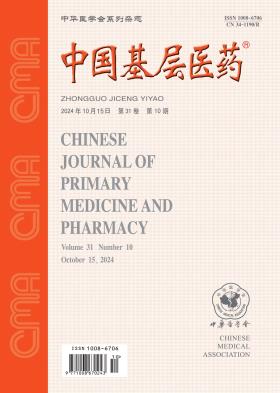老年血吸虫病肝病晚期患者脾切除后骨密度、血清钙磷的变化
引用次数: 0
摘要
Objective To observe the changes in bone density and calcium and phosphorus metabolism indicators in elderly patients with advanced schistosomiasis liver disease after splenectomy. Method: 118 patients with advanced schistosomiasis liver disease who were hospitalized at the Third People's Hospital of Kunshan City from January 2017 to July 2018 were included in the study group. 81 patients who underwent splenectomy were included in the observation group, and 37 patients who did not undergo splenectomy were included in the control group. Compare the differences in B-ultrasound bone density values, Asian Osteoporosis Self Screening Tool (OSTA) scores, and indicators such as aspartate aminotransferase (AST), alanine aminotransferase (ALT), serum albumin (ALB), fibrinogen (FBG), lactate dehydrogenase (LDH), calcium, phosphorus, parathyroid hormone (PTH), and 25-hydroxyvitamin D between two groups of patients. The results showed that the B-ultrasound velocity (SOS) and T-values of the observation group were (3926.6 ± 143.4) m/s and (-2.12 ± 1.35), respectively, which were significantly higher than those of the control group (3832.0 ± 151.4) m/s and (-3.12 ± 1.33) (t=3.27 and 3.78, both P 0.05). The AST and ALT levels in the observation group were (34.04 ± 11.81) U/L and (21.53 ± 8.73) U/L, respectively, significantly higher than those in the control group (26.19 ± 5.78) U/L and (14.00 ± 4.89) U/L (t=3.83, 4.90, P 0.05). Observation group 25 hydroxyvitamin D [(24.06 ± 6.99) μ G/L] significantly higher than the control group [(21.36 ± 6.50) μ G/L] (t=1.99, P<0.05). Conclusion: Elderly patients with advanced schistosomiasis liver disease lack vitamin D, and their bone density after splenectomy is significantly higher than that of patients without splenectomy. There is no significant change in calcium and phosphorus metabolism indicators.本文章由计算机程序翻译,如有差异,请以英文原文为准。
Changes of bone density, serum calcium and phosphorus in elderly schistosomiasis hepatopathy patients in advanced stage after splenectomy
目的
观察老年晚期血吸虫肝病脾切除术后患者骨密度及钙磷代谢指标的变化。
方法
纳入2017年1月至2018年7月在昆山市第三人民医院住院治疗的晚期血吸虫肝病患者118例,脾切除术后患者81例为观察组,未行脾切除术的患者37例为对照组。比较两组患者的B超骨密度值、亚洲人骨质疏松自我筛查工具(OSTA)评分及天门冬氨酸氨基转移酶(AST)、丙氨酸氨基转移酶(ALT)、血清白蛋白(ALB)、纤维蛋白原(FBG)、乳酸脱氢酶(LDH)、钙、磷、甲状旁腺激素(PTH)、25-羟维生素D等指标的差异。
结果
观察组B超声波速率(SOS)值、T值分别为(3 926.6±143.4)m/s、(-2.12±1.35),明显高于对照组的(3 832.0±151.4)m/s、(-3.12±1.33)(t=3.27、3.78,均P 0.05)。观察组AST、ALT分别为(34.04±11.81)U/L、(21.53±8.73)U/L,均明显高于对照组的(26.19±5.78)U/L、(14.00±4.89)U/L(t=3.83、4.90,P 0.05)。观察组25-羟维生素D[(24.06±6.99)μg/L]明显高于对照组[(21.36±6.50)μg/L](t=1.99,P<0.05)。
结论
老年晚期血吸虫肝病患者维生素D缺乏,脾切除术后患者的骨密度明显高于未行脾切除的患者,钙磷代谢指标无明显变化。
求助全文
通过发布文献求助,成功后即可免费获取论文全文。
去求助
来源期刊
CiteScore
0.10
自引率
0.00%
发文量
32251
期刊介绍:
Since its inception, the journal "Chinese Primary Medicine" has adhered to the development strategy of "based in China, serving the grassroots, and facing the world" as its publishing concept, reporting a large amount of the latest medical information at home and abroad, prospering the academic field of primary medicine, and is praised by readers as a medical encyclopedia that updates knowledge. It is a core journal in China's medical and health field, and its influence index (CI) ranks Q2 in China's academic journals in 2022. It was included in the American Chemical Abstracts in 2008, the World Health Organization Western Pacific Regional Medical Index (WPRIM) in 2009, and the Japan Science and Technology Agency Database (JST) and Scopus Database in 2018, and was included in the Wanfang Data-China Digital Journal Group and the China Academic Journal Comprehensive Evaluation Database.

 求助内容:
求助内容: 应助结果提醒方式:
应助结果提醒方式:


